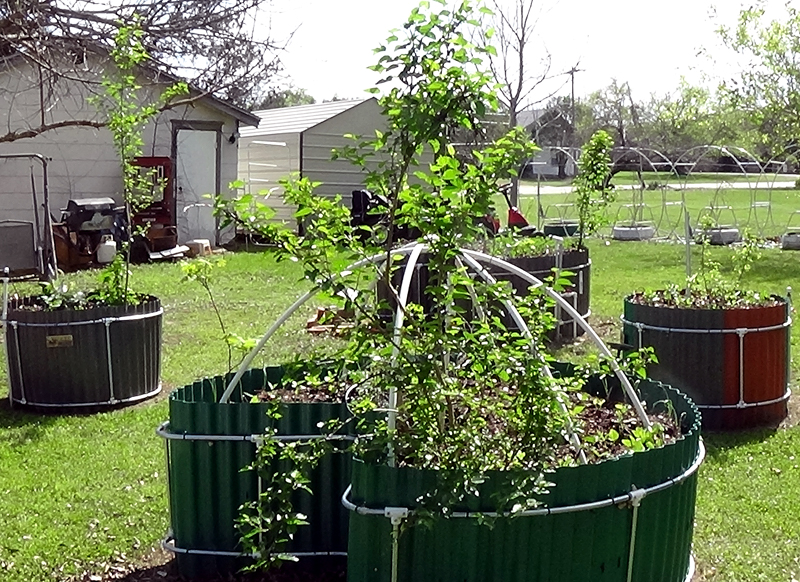 We are halfway through March and the greenery in my keyhole gardens is starting to show. Actually, some plants had begun erupting from the soil about a week ago (which was about a week after we planted), but a frost alert for most of Central Texas had me dredging out some covers and pinning them down on the edges of the gardens last week.
We are halfway through March and the greenery in my keyhole gardens is starting to show. Actually, some plants had begun erupting from the soil about a week ago (which was about a week after we planted), but a frost alert for most of Central Texas had me dredging out some covers and pinning them down on the edges of the gardens last week.
I am continuing to experiment with some trees in some of my keyholes. This year, I added an apricot tree which is already sprouting leaves. This has been a weird season, with temperatures sometimes dropping to around freezing and then a few hours later hitting the low 80s. This makes it difficult to decipher what to expect. My guess was that the last freeze would occur no later than March 14, so that was my “go” date to move forward.
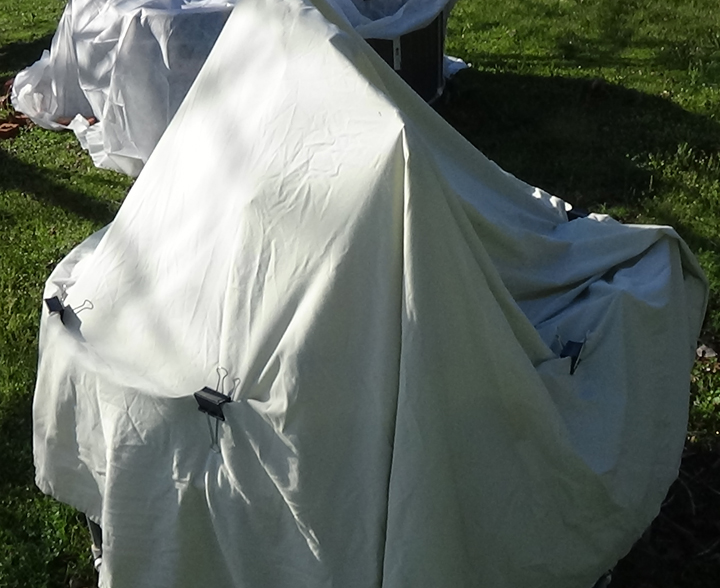 This year, I am topping my gardens with mushroom compost mixed with some bark mulch, which was at the suggestion of Dr. Deb Tolman, PhD, who oversaw much of the planting.
This year, I am topping my gardens with mushroom compost mixed with some bark mulch, which was at the suggestion of Dr. Deb Tolman, PhD, who oversaw much of the planting.
It was like running a race to get my 11 keyhole gardens ready for spring because of my being involved in other projects and trying to schedule work sessions amid abruptly changing weather patterns. Too, we have been busy getting keyhole garden kits shipped to customers throughout the United States.
I planted all my usuals as far as crops go, emphasizing early peas, potatotes, carrots, tomatoes, black-eyed peas (pre-germinated), and a variety of beans.
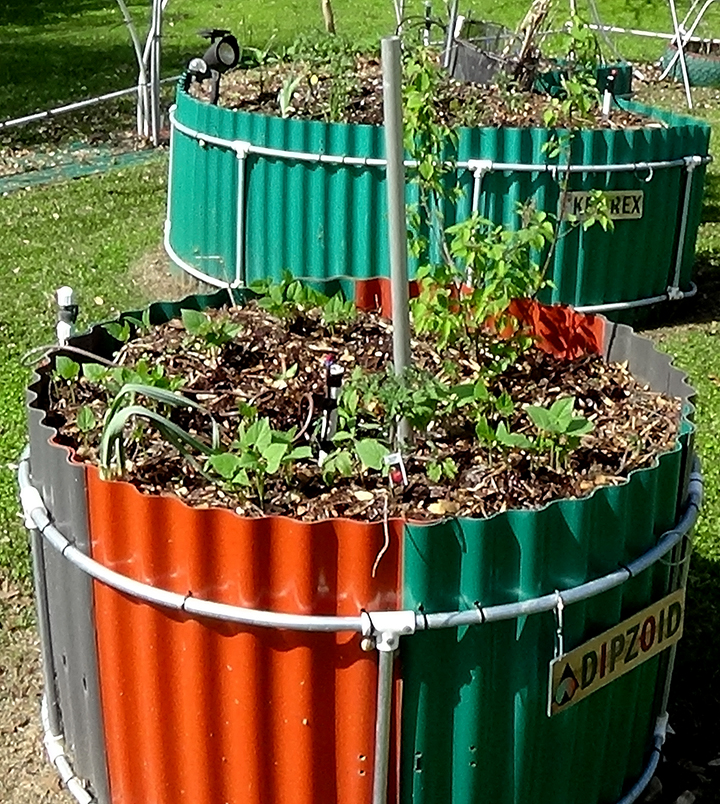 I also planted spinach, lettuce, pumpkins, zucchini, okra, watermelons, cantaloupe, and a bunch of other stuff.
I also planted spinach, lettuce, pumpkins, zucchini, okra, watermelons, cantaloupe, and a bunch of other stuff.
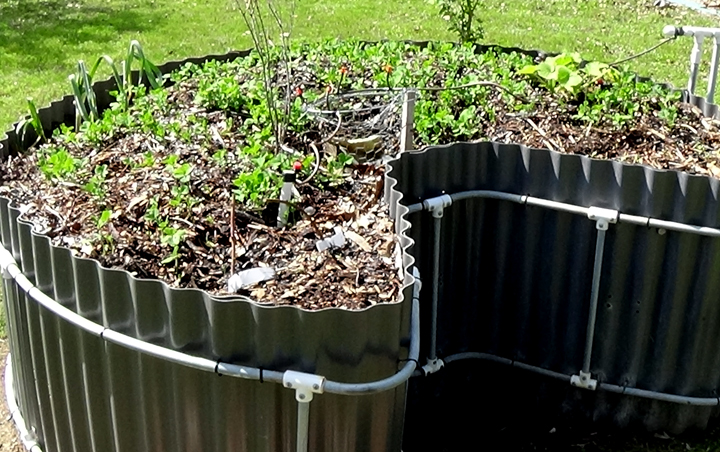 I can’t emphasize enough my like for keyhole gardens, if from one of our kits or made of rocks. To me, they are the perfect system.
I can’t emphasize enough my like for keyhole gardens, if from one of our kits or made of rocks. To me, they are the perfect system.
They conserve water, they are easy on the back, you can plant crops very close together, the internal basket provides a method of recycling and feeding the crops with “green” material, like left-over veggie cuttings, etc., and the harvests are usually abundant.
Not only that, but you control the soil and can harvest crops at their peak, which means better tasting and more nourishing produce.
Too, keyhole gardens can be started anytime.
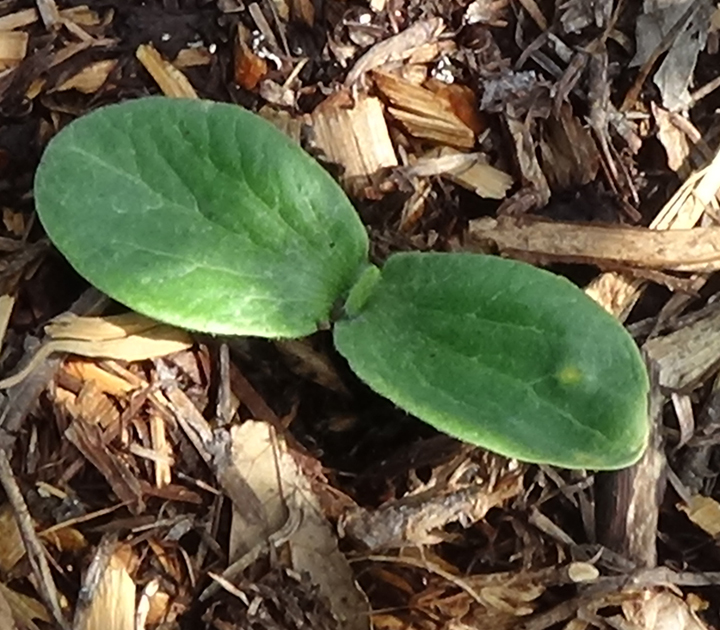 Just fit what you are attempting to raise to the season. Some crops do better in the summertime, others prefer cooler climates.
Just fit what you are attempting to raise to the season. Some crops do better in the summertime, others prefer cooler climates.
An added advantage of keyhole gardens is that they are the perfect teaching tool for youths to learn about gardening. Kids can escape the I-pad (or whatever it is called) for a little while and learn to raise their own crops, getting back to nature and learning a life skill, which these days is more important than ever.
There is a special beauty and magic in watching what you planted grow.
The image at right is a pumpkin breaking the dirt.